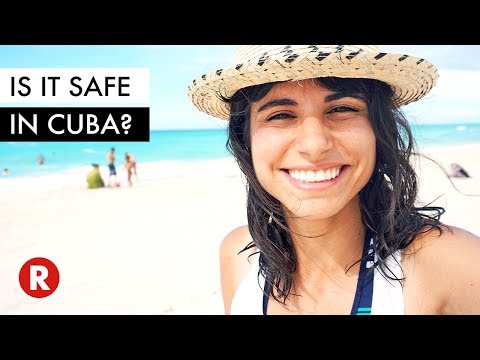
Planning a trip to Cuba? This enigmatic Caribbean island is known for its white-sand beaches, rolling mountains, cigars, and rum. Its colorful capital, Havana, is famed for the lively nightlife, faded yet colorful colonial architecture, and the vintage cars that line its streets. However, traveling to Cuba can be quite different from other destinations. Here’s everything you need to know before you embark on your Cuban adventure.
#### 1. Visa and Documentation
Most travelers will need a tourist card (also known as a visa) to enter Cuba. This can often be purchased through your airline or at the airport before departure for about $50-100 USD. Remember that travel insurance is mandatory when visiting Cuba and you might be asked to show proof upon arrival.
#### 2. Currency Situation
Cuba has two currencies: CUP (Cuban Peso) and CUC (Cuban Convertible Peso), though the government has been working towards unifying these. As a tourist, you will mainly use CUC which is pegged to the USD at 1:1 ratio but consider that exchange rates can vary especially at street exchanges or ‘cadecas’. It’s crucial to bring cash (preferably Euros or Canadian dollars as USD has an extra exchange fee) since American credit cards generally don’t work in Cuba.
#### 3. Internet Access is Limited
Internet access in Cuba is improving but remains limited and relatively expensive compared to other countries. WiFi is available in major hotels and in public hotspots around main cities (known as WiFi parks). You’ll need to purchase a prepaid card from ETECSA (the state telecom company) to access the Internet.
#### 4. Transport Options
Transport in Cuba can be complex due to its outdated infrastructure. The vintage cars are charming but may not always be reliable for long distances. Viazul buses are a popular option for tourists traveling between cities; however, booking tickets in advance is essential as they can sell out quickly. Alternatively, consider renting a car for more flexibility or arranging private transfers through your accommodation.
#### 5. Accommodation Choices
In addition to hotels, ‘casas particulares’ (private homes licensed to offer bed-and-breakfast accommodation) are an excellent way of experiencing authentic Cuban hospitality. They’re also more economical compared to hotels and are widely available even in smaller towns.
#### 6. Understand Restricted Items
Be aware of what you can bring into and take out of Cuba; there are strict rules regarding these matters which include anything considered “anti-Cuban” such as drones or GPS devices without prior approval. When returning, U.S travelers have restrictions on bringing back Cuban cigars and rum under certain quantities.
#### 7 Food and Drink
Cuban cuisine is a blend of Spanish and Caribbean influences with common dishes including rice and beans (‘moros y cristianos’), plantains, pork, and ‘ropa vieja’ (shredded beef). While state-run restaurants tend to provide more traditional fare often aimed at tourists, private eateries (‘paladares’) are usually superior in quality and experience.
####8 Learn Basic Spanish Phrases:
While Cubans working directly with tourists often speak some English, knowing basic Spanish will enrich your interactions with locals who are generally warm-hearted but may not speak English.
####9 Cultural Sensitivity:
Understand that while Cubans are friendly people eager to share their culture with visitors, they still live under a communist regime where certain topics on politics might be sensitive or outright forbidden.
### Conclusion: Embrace the Unexpected!
Traveling through Cuba offers an experience like no other country due mostly due partially because it feels like travelling back time—whether it’s riding one those classic American cars listening Buena Vista Social Club live local bar while sipping fresh mojito understanding Cuban rhythm life essential allowing yourself embrace unexpected adventures along way! Enjoy journey rich history vibrant culture captivating scenery unique island nation provides!
